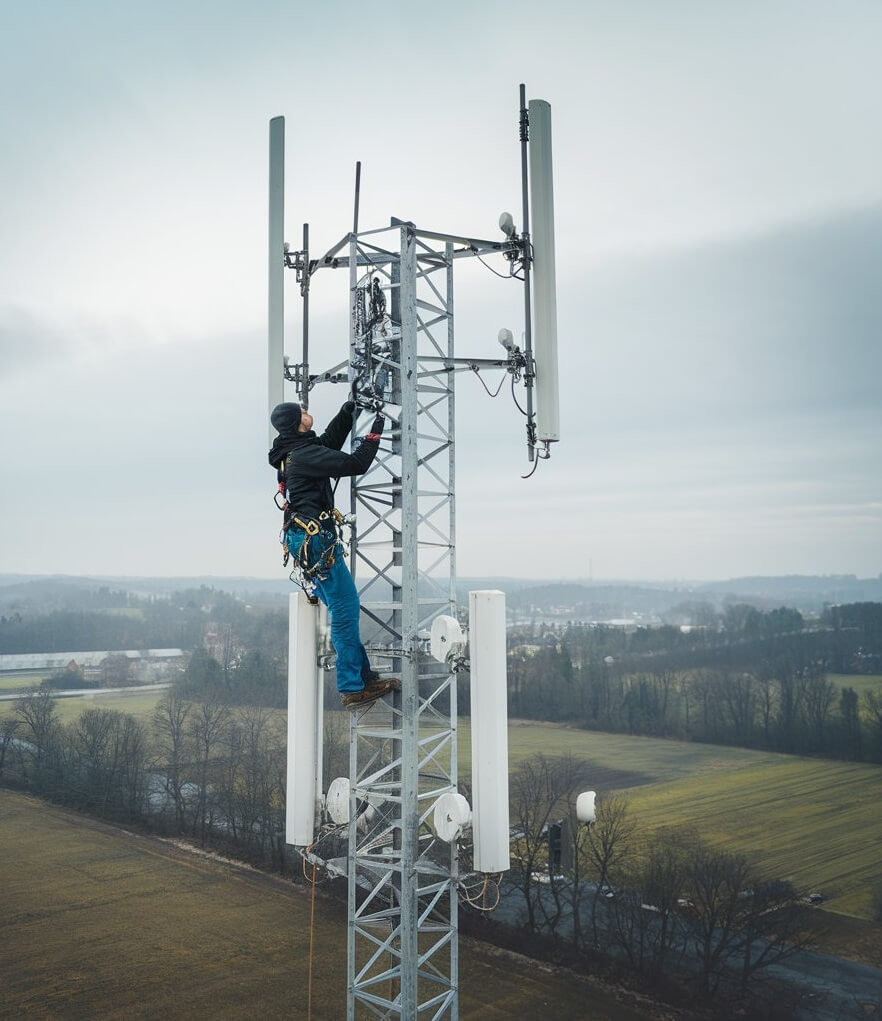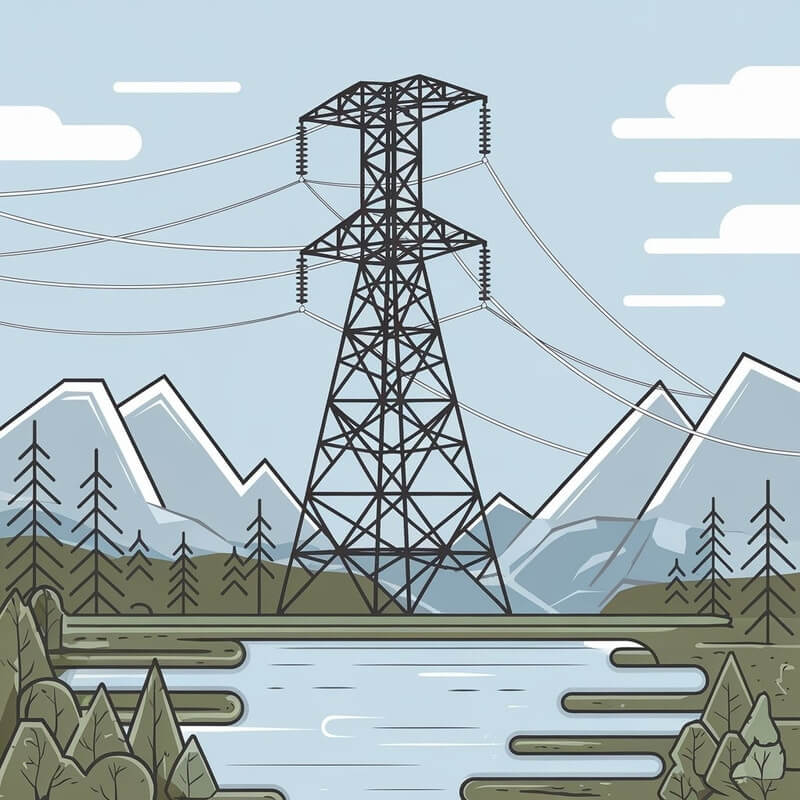Understanding the ANSI-TIA-222 Revision G: Enhanced Standards for Antenna Mounts, Ice Loading, and Safety in Telecom Structures
ANSI/TIA-222 Revision G Standard Overview
The ANSI-TIA-222 Revision G standard establishes key guidelines for the structural design and construction of telecommunication towers, antenna mounts, and supporting infrastructure. Known for addressing safety, durability, and environmental considerations, this standard is widely adopted in the telecommunications industry for tower and antenna mount specifications.


Antenna Mount Requirements
In Revision G, the standard defines precise guidelines for antenna mounts to ensure robust structural support and long-term stability. Antenna mounts must withstand varied environmental stressors, including wind, seismic activity, and ice loading. Specific load-bearing requirements ensure that antenna mounts maintain their integrity in extreme weather conditions. The revision also emphasizes regular inspections and the use of certified materials to ensure the highest safety and performance standards.
Ice Loading Considerations
One significant focus in Revision G is on ice loading requirements, which are critical for towers in regions prone to cold climates. Ice loading refers to the additional weight from ice accumulation on the structure, impacting the tower’s stability and capacity. This revision sets forth precise calculations for anticipated ice loads, which differ based on geographical location and elevation. By accounting for these ice loads, Revision G helps prevent structural failure and ensures safety, especially in icy or snowy environments.
Safety Use and Structural Stability
Safety is a central theme in ANSI/TIA-222 Revision G. The standard requires structures to be built to withstand both everyday use and emergency scenarios, such as extreme weather events or seismic activities. Safety specifications in Revision G include load-bearing limits, reinforcement guidelines, and maintenance protocols. These updates not only protect the physical integrity of the structures but also prioritize the safety of personnel who maintain and repair these towers.
How the New Revision Affects Pricing
The changes introduced in ANSI/TIA-222 Revision G impact the overall cost of tower construction and maintenance.
With stricter guidelines around materials, ice loading calculations, and mandatory inspections, the revision may increase the upfront cost of constructing new telecommunication towers.
Antenna mounts and support structures now require stronger materials and more frequent inspections, which add to both material and labor costs.
However, these updates ultimately contribute to long-term savings by reducing the frequency and severity of maintenance issues and enhancing safety.

History of the ANSI/TIA-222 Standards
The ANSI-TIA-222 standard has continuously evolved to meet the growing demands and safety challenges of the telecommunications industry. Each revision introduced new improvements, responding to both environmental factors and advancing technology. Here’s how it has progressed over the years:
Early Development (1959)
In 1959, the TIA-222 standard emerged as a response to the increasing need for structural guidance in telecommunications. Initially, it focused on essential tower strength and stability, providing foundational guidelines for designing and installing antenna-supporting structures like towers and masts.
Gaining ANSI Recognition (1970s)
By the 1970s, the Telecommunications Industry Association (TIA) partnered with the American National Standards Institute (ANSI) to create the ANSI-TIA-222 standard. This alignment gave the standard national recognition, making it a critical reference for telecom structures across the U.S. During this period, the standard addressed basic environmental load considerations and established more uniform industry guidelines.
Major Overhaul with Revision C (1976)
In 1976, Revision C introduced one of the first substantial updates. For the first time, it placed a strong emphasis on wind loading and environmental factors. Also it is establishing more comprehensive safety guidelines for different types of antenna-supporting structures. This revision significantly expanded the standard’s scope and reinforced its focus on structural reliability.
Improved Safety with Revision D (1987)
Then, in 1987, Revision D responded to advancements in communication technologies by expanding the standard’s coverage to include additional tower types and configurations. It focused heavily on improving structural requirements and introduced guidelines to handle environmental loads like wind and ice. Furthermore it is enhancing tower safety.
Enhanced Load Calculations in Revision E (1991)
In 1991, Revision E took the standard further by refining structural requirements and covering an even broader range of load conditions. This revision introduced updated safety protocols for tower construction and maintenance, making it possible to accommodate the increased weight from heavier, more advanced antenna equipment.
Stricter Guidelines with Revision F (1996)
Moreover the next significant update, Revision F in 1996, continued to build on these safety standards. This version emphasized local environmental conditions, updating guidelines on wind and ice loads to reflect the growing awareness of extreme weather effects on tower stability. It also introduced stricter rules for tower foundation design, ensuring that structures remained secure under various environmental stresses.
Major Transformation in Revision G (2005)
In 2005, Revision G marked a major transformation of the standard, shifting to a more global design approach. It accounted for extreme weather events, seismic activity, and different wind exposure categories. This revision included more rigorous specifications for ice loading. Also it is tightened safety standards, and reinforced maintenance requirements, making the standard one of the most comprehensive in telecom infrastructure.
Modern Updates in Revision H (2017)
Finally, in 2017, Revision H brought the standard into the modern era. Adjusting for newer technology demands and updating guidelines for a wider range of tower and antenna types. This revision further refined ice and wind loading requirements. Also it emphasized safety, and increased design flexibility to accommodate rapid technological advancements. By aligning more closely with international standards, Revision H also facilitated broader adoption worldwide, fostering consistency in telecom infrastructure design.
A Summary of Progress
Each update to the ANSI-TIA-222 standard has raised the bar for safety and reliability. From its start as a basic structural guide, it has grown into a comprehensive manual that addresses specific environmental loads. Cutting-edge technologies, and safety protocols. These revisions have ensured that telecom structures meet the highest standards for resilience, stability, and safety, even in the face of advancing technologies and evolving environmental challenges.